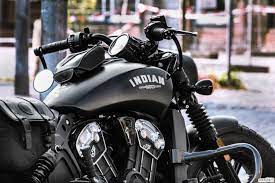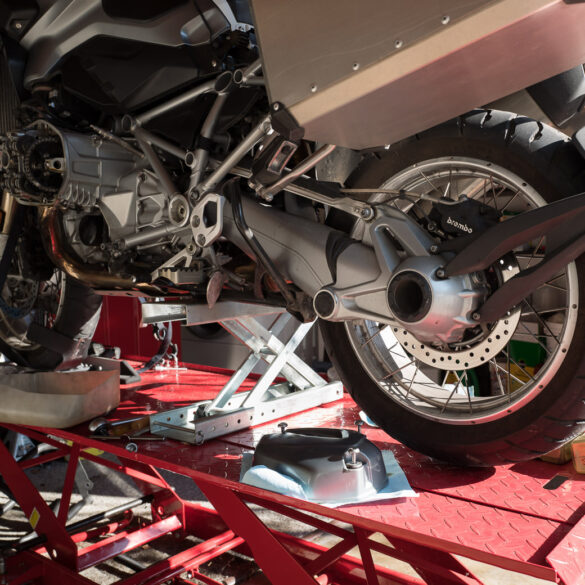Tips for maintaining your two wheeler
Maintaining your two-wheeler in top condition is essential for ensuring optimum performance and safety on the road. Regular maintenance not only extends the lifespan of your bike but can also prevent costly repairs down the line. It is therefore important to develop a maintenance routine that covers all the essential components of your two-wheeler. In this article, we will provide you with expert tips for maintaining your two-wheeler for optimum performance, covering everything from cleaning and lubrication to tire and brake maintenance, and storage and protection tips. Read on to discover the top tips for keeping your bike in peak condition.
1. Regular Cleaning and Lubrication
As a two-wheeler owner, it's essential to maintain your bike regularly to keep it in top shape. One of the essential steps is regular cleaning and lubrication of the bike's parts. Dirt and debris can accumulate on your bike's components, making it harder to ride and potentially causing long-term damage. Here's what you need to do:

Cleaning the two-wheeler
Use a mild detergent and water to clean the bike's exterior, making sure to scrub hard-to-reach areas. Once you're done, rinse the bike thoroughly and wipe it down with a dry cloth. You can also use specialized cleaning products that are designed for two-wheelers.
Lubricating the bike
Lubricate the bike's moving parts (such as the chain) to avoid rust and friction. Focus on areas that come in contact with each other and on parts exposed to the elements. Use recommended lubricants and follow the manufacturer's instructions carefully.
2. Inspection of Tires and Wheels
Next, you need to inspect the bike's wheels and tires. Any issues here can be dangerous and could lead to accidents, so take this step seriously. Here's what you need to do:
Tire pressure check
Check your bike's tire pressure regularly and maintain the recommended levels. Low tire pressure can cause reduced performance, and high tire pressure can result in tire damage.
Tire tread inspection
Inspect the tire treads to make sure your bike has good traction. If the treads are worn, replace them immediately to avoid skidding and accidents.
Wheel inspection
Check the wheels for any dents, damage, or loose spokes. Loose spokes can cause vibrations when you're riding, which can be uncomfortable and affect your bike's performance.
3. Oil and Fluid Check-Ups
Checking the bike's oil and other fluids is essential for optimal performance. Here's what you need to do:
Engine oil check and replacement
Check the bike's engine oil levels regularly and replace them as necessary. Your bike's manual should tell you how often you need to replace the oil, but it's typically every 3,000 to 5,000 miles.
Coolant check and replacement
Check the coolant levels and replace them as necessary. Coolant keeps the engine from overheating, so make sure you maintain the recommended levels.
Brake fluid check and replacement
Brake fluid is an essential component for your bike's braking system, so it's crucial to keep it topped up. Check the brake fluid levels and replace them as necessary to ensure your brakes work efficiently.
4. Battery Maintenance
Finally, don't forget to maintain your bike's battery. A dead battery can leave you stranded and cause significant inconvenience. Here's what you need to do:
Battery charging and replacement
Charge the battery regularly to keep it topped up. If your battery is old or weak, it may need to be replaced.
Cleaning battery terminals
Clean the battery terminals regularly to prevent corrosion. Use a wire brush and baking soda to scrub away any stuck-on dirt or debris.
By following these tips for maintaining your two-wheeler, you'll ensure that your bike stays in optimal condition and provides you with a smooth, safe ride.
5. Chain Maintenance and Adjustment
A well-maintained chain is crucial for smooth and efficient operation of your two-wheeler. Check the chain tension regularly by placing the bike on its center stand and moving the chain up and down. The ideal tension is when the chain can be moved up and down by 1-2 inches. Adjust the tension as needed using the chain adjuster.
Lubricating the chain is also important to prevent rust and wear. Use a high-quality chain lube and apply it evenly on the entire length of the chain, avoiding the sprocket teeth. Remove excess lube with a clean cloth.
6. Brake Maintenance
Your brakes are a critical component of your two-wheeler and should be inspected regularly. Check the brake pads for wear and replace them if they are less than 2 mm thick. Inspect the brake rotors for any grooves or cracks and replace them if necessary.
If you notice any squeaking or grinding sounds when braking, it's a sign that your brakes need attention. Don't delay in getting them checked by a professional.
7. Suspension and Steering Maintenance
The suspension and steering of your two-wheeler play an important role in providing a smooth ride. Inspect the suspension for any leaks, cracks, or signs of wear. Check the steering for any looseness or play and adjust it accordingly.
Regularly cleaning and lubing the suspension and steering bearings can prevent corrosion and prolong their lifespan.
8. Storage and Protection Tips
When not in use, it's important to store your bike properly to prevent damage from weather and other factors. If storing for an extended period, use a fuel stabilizer to prevent the gas from going stale and draining the battery.
Cover your bike with a weather-resistant cover to protect it from rain, snow, and sunlight. If possible, store it in a garage or covered area to further protect it from the elements. Proper storage and protection can help keep your bike looking new and performing optimally for years to come.Regular maintenance is an investment in the longevity and performance of your bike. Following the tips in this article will help you keep your two-wheeler in top shape and ensure safe and enjoyable riding experiences. With proper maintenance and care, your bike will serve you for many years to come.
FAQs
1. How often should I clean and lubricate my two-wheeler?
We recommend cleaning your bike after every ride, especially if you've ridden in wet or dusty conditions. Lubrication should be done every 300 to 600 miles, depending on the type of lubricant you use and the conditions in which you ride.
2. Can I check my tire pressure with a regular pressure gauge?
Yes, you can use a regular pressure gauge to check your tire pressure. Make sure to check the recommended pressure for your bike and adjust the gauge accordingly.
3. How do I know if my brake pads need to be replaced?
You can tell if your brake pads need to be replaced if you hear a squeaking noise when you brake, if the brake lever feels spongy, or if the brake pads are less than 1/8 inch thick.
4. How should I store my bike for the winter?
To store your bike for the winter, clean it thoroughly, change the oil, and remove the battery. Store it in a dry and secure location, preferably elevated on a stand to prevent flat spots on the tires. You can also use a breathable cover to protect it from dust and moisture.





1 comment
[…] may also like to read – https://silverscoopblog.com/tips-for-maintaining-your-two-wheeler/ and […]